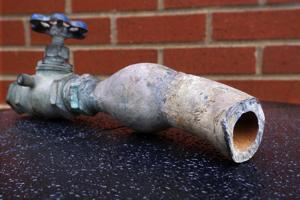(The Center Square) – Lawmakers have introduced a bill that would mandate all water utilities to begin the process of replacing all the lead service lines in the state.
State Rep. Lamont Robinson, D-Chicago, has introduced the Lead Service Line Replacement and Notification Act, a bill creating a plan, funding, and timeline for all lead service lines to be identified and replaced. State Sen. Melinda Bush, D-Grayslake, will file a Senate companion version.
Jeremy Orr, senior attorney with the Natural Resources Defense Council, said Illinois has between 800,000 to 1.4 million lead service lines delivering drinking water to residents, far more than any other state.
“I think folks realized how critical it was once we started to get an estimate of the problem of how many lead pipes there were throughout the state, and nobody else even comes close,” Orr said.
The bill would prevent a practice known as partial replacement, in which only the utility’s side of the lead line is replaced, while the portion of the line that runs under private property remains. Orr said the practice can disturb the lead material in the remaining pipe, actually increasing the risk of lead leaching into drinking water.
In addition, utilities would be required to prioritize replacement at facilities used by high-risk populations, such as preschools and daycares,
According to the Metropolitan Planning Council, replacing all lead lines in the state would lead to an investment of $5.5 billion to $14 billion.
To pay for the massive project, Orr said an assessed fee would be applied to homeowners, with the highest income earners picking up more of the tab.
“If you live in a community that has higher incomes the more the fee was, but the fee was specifically capped,” Orr said.
Justin Williams with the Metropolitan Planning Council said the project would create thousands of jobs.
“Replacing lead service lines is an investment with some pretty profound economic returns, for every million dollars invested, estimates is that it creates about 16 jobs,” Williams said.
According to research by the MPC, Hamilton County in the far southern part of Illinois could see job creation sufficient to employ up to 6.5% of its unemployed population. Champaign County, meanwhile, could see enough jobs created to employ up to 4.5% of its unemployed population.
Congress banned the use of lead pipes in 1986, but most lines installed before then were never removed.







